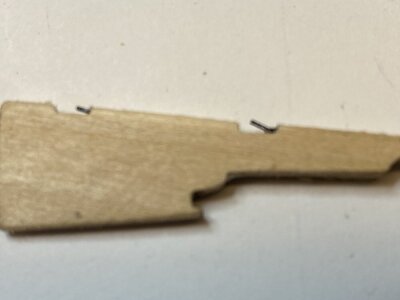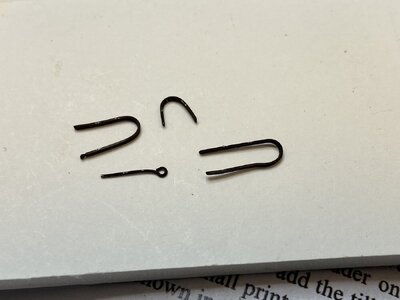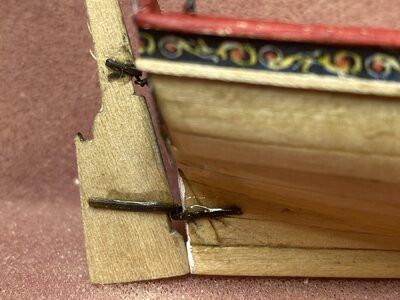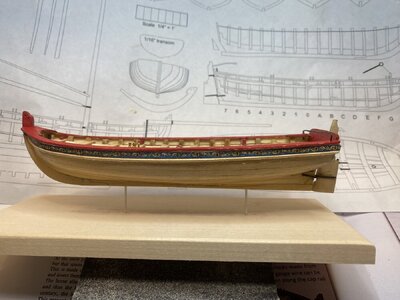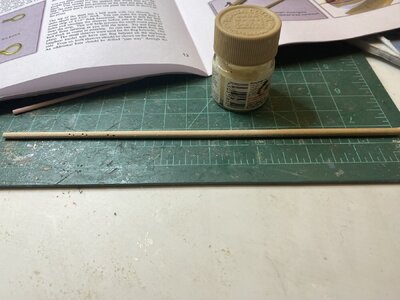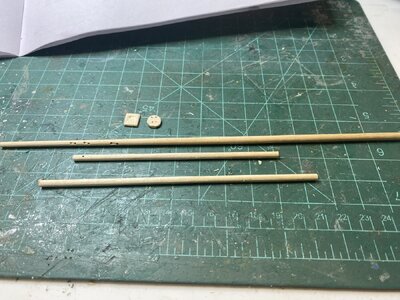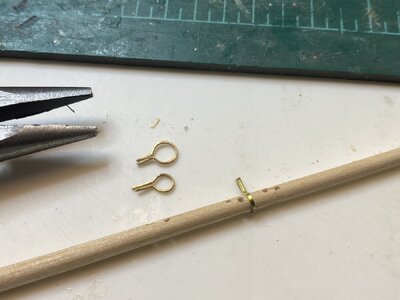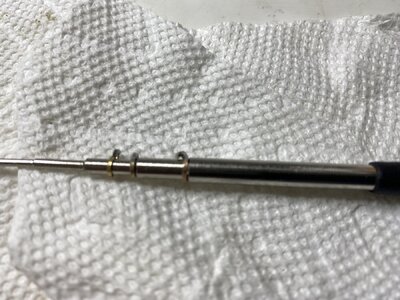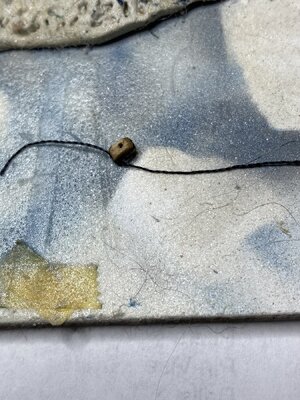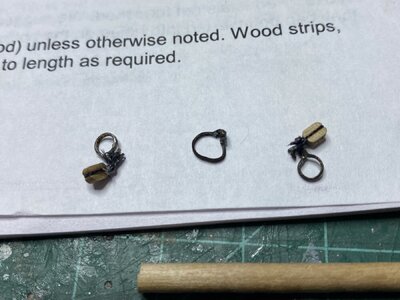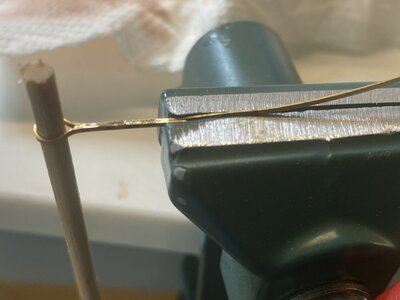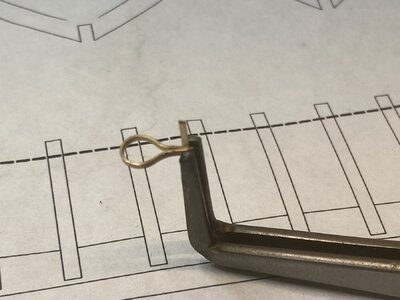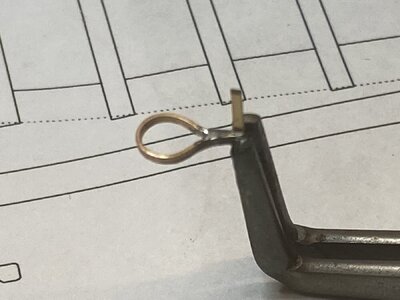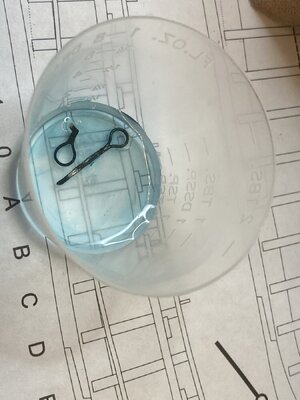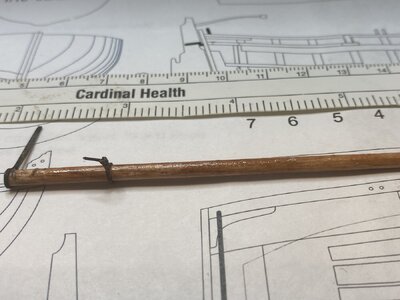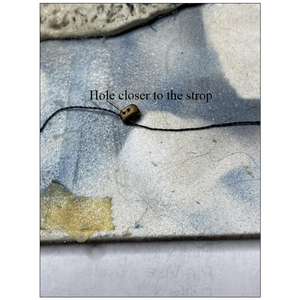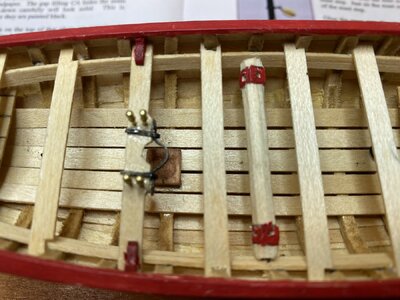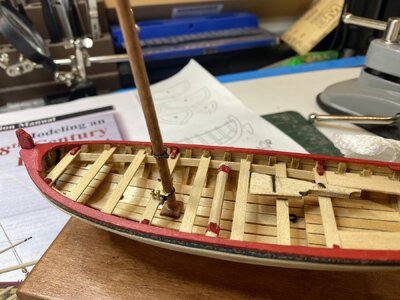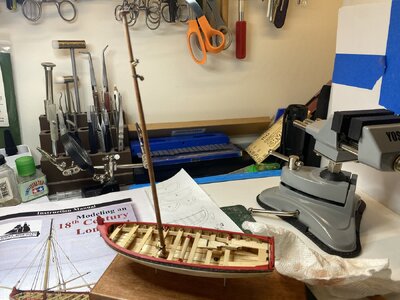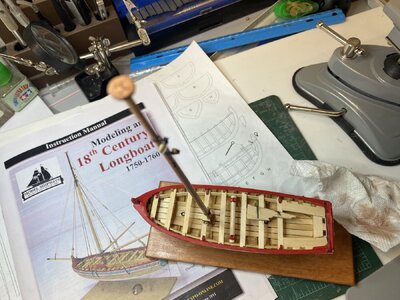I agree with you 100%. This very problem is mentioned in the building instructions.Very nice build Rob!
As you have not yet rigged the boom sheet, this might be an interesting point for discussion The instructions show the tiller over the horse. This configuration seems to have been taken from the famous Medway model at RMG which is an understandable thing to do. But it brings up the question of how the sheet block would move from one side to the other when the boat is being tacked without interfering with the tiller? Other than having the horse higher and the tiller passing under it I cannot think of a solution. Hope someone here does.
Allan
" Up to the mid-18thcentury, the horse was positioned as shown on the model.This presented a problem while sailing, as the tiller would getin the way. It wouldn’t allow the block to slide effortlessly from one side to the other.
To remedy this, during the second half of the 18th century,they started making the horse so it actually spanned over the tiller. You may opt to do so as well. But since this model is inspired by several contemporary longboat models in the NMM, it was created as shown on those models. These contemporary models represent the horse prior to the improvement being made."
I have no idea why they did this or why it took so long to figure out how to cure it by just making the horse taller than the tiller. It indeed would be of interest if anyone has the answer!
Last edited:




